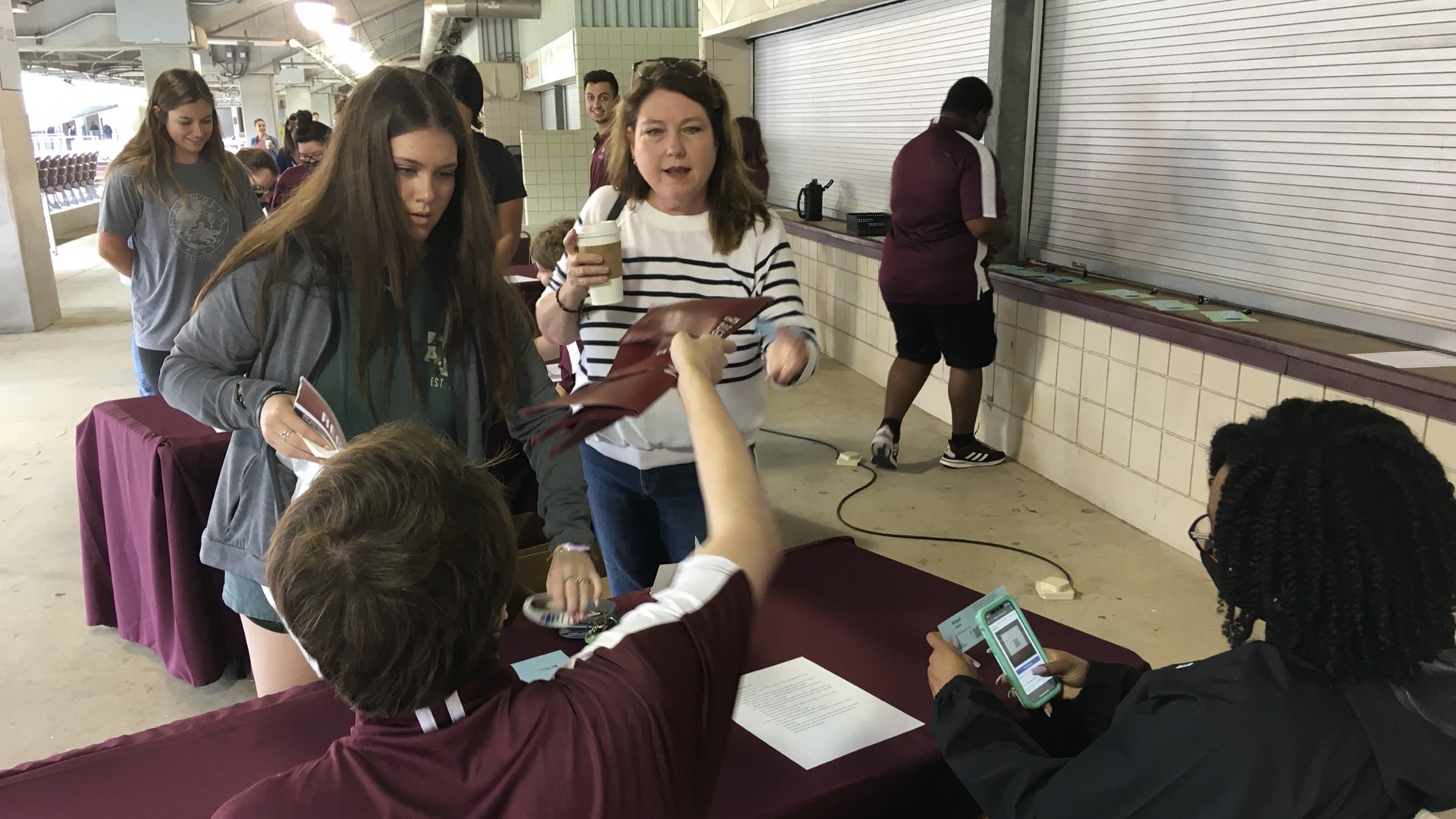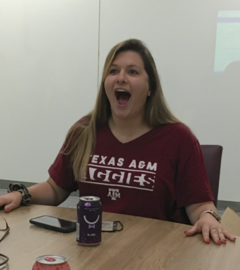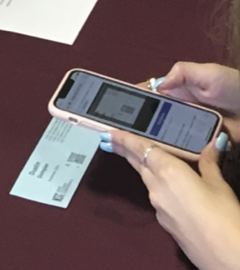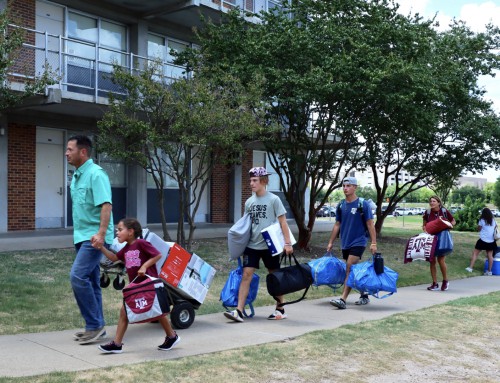
Try to “crack the code” on this problem: You have one month to find a way to safely welcome 27,000 people to campus, but no vendor has a solution that can be delivered in time.
That was the problem confronting New Student & Family Programs (NSFP), an office in the Offices of the Dean of Student Life. The team was headed towards a mostly virtually experience until changes by The System Office transitioned NSCs to be in-person. However, the team needed to restrict capacity in rooms to maintain distancing for a record-setting number of freshman and transfer students. Twenty-one in-person conferences will be held throughout the summer with up to 700 students plus accompanying family members on each date.
The goal was to create a setting where students and families were never all in the same place at once. Therefore each conference has multiple breakout times, each with as many as eight concurrent sessions to choose from. In the past, if all seats in a session were full, people could still step in and make it “standing room only.” The staff opted to maximize capacity by offering two duplicate tracks on each date that simply had morning and afternoon times reversed. However, they needed a way to balance participation in each track and for students to select their desired sessions in advance. Since rooms have different capacities, a solution was needed to limit selection to the number of available seats and to provide a check-in system to validate attendees.
Overwhelmed, the staff had to expedite planning with multiple campus partners and communicate with more than 13,000 incoming students about changes. The staff certainly didn’t need the added logistical nightmare of managing session selections. A working selection system to handle that challenge was needed within a month. NSFP staff reached out to Technology Services – Student Affairs for assistance.
Decoding
The first key was to adequately decode the problem. Technology Services – Student Affairs facilitated review of a variety of event registration products. Unfortunately, they were all found to be unsuitable for NSCs specific needs and implementation timeline. It became evident an event registration system was not what was needed. The Applicant Information System (AIS), Texas A&M’s admissions checklist portal, already provides basic event registration functions as students use it to choose their conference dates and to identify their guests. Something more was needed that could integrate with AIS.
Determined to help find a viable solution for NSC session selection, Technology Services – Student Affairs software developers brainstormed what it would take to create a solution. They proposed a creative enhancement to an existing custom interview sign-up tool, which was proven during the past year by freshmen leadership organizations, The Big Event and Fish Camp for their member selection processes. The most critical adjustments were made in just one day, and a working prototype was presented and accepted two days later.
 Coding
Coding
The next key was to enhance the software code to simplify or even automate functions. To provide a seamless experience for users navigating between AIS and the selection system, student data had to be exchanged frequently between those systems. Technology Services – Student Affairs also placed a high value on letting NSFP staff be self-sufficient throughout the summer to monitor and manage the selection and check-in processes.
There were many “Wow!” moments when the NSFP staff were trained on the system. The click of a button generates a list of students who need to complete selection before their deadline. With a click of another button, schedule confirmation and parking instructions are emailed the day before students arrive. Stefanie Baker, interim director of the Offices of the Dean of Student Life, was not alone in her excitement as she blurted out, “We have data!” Even with nearly 1,800 distinct events across all 21 conferences, the system remains easy to use while presenting a treasure trove of information.
Each week since going live, the staff is using the data to make smart decisions and refinements in real time to improve the student experience. There’s no need to wait until the end of the season to decide what to do differently.
Codes
The final key was to envision a different process for conference check-in. The process needed to be efficient, requiring minimal contact. Minimal contact meant replacing printed schedules with an electronic format. Additional challenges included the need to assign students evenly to orientation groups and different dining facilities for lunch and to help everyone find and arrive at the right places in their personalized schedules. Technology Services – Student Affairs was given freedom to re-imagine the process.

Throughout conversation about the check-in process Technology Services – Student Affairs learned that NSFP had previously spent up to four day per NSC preparing for check in including the preparation of name tags. While not the focus of the project, the developers brainstormed ideas and developed a prototype of a name tag that could be fully generated and easily printed with the click of a few buttons. The simple process includes automatically making the group and lunch assignments. Instead of needing four days, the NSFP staff now do it all the day before each conference, which gives students an extra three days to finalize their selections.
“The improved efficiency has relieved a lot of stress on the staff,” said Emily C. Ivey, NSFP director.
Each name tag has a unique QR code in the corner beside a letter and a number that convey critical information needed for check-in. The layout places the personalized schedule and other information on the right side of perforated stock which is folded in the middle to become a two-sided name tag. If a student scans their own QR code with their phone, they see their up-to-date schedule with links to the campus map showing the location of each session venue. Family members can scan the code to get a copy of their student’s schedule. If an authorized NSC worker scans the code, it instantly checks them in.
One parent, accompanying their fourth new Aggie, described the check-in process as the smoothest and fastest ever.
Whereas the original hope had been to just find a way to somehow manage session selection for 27,000 campus visitors, Technology Services – Student Affairs ultimately delivered a solution on time that provides a high-quality experience. NSFP staff want to continue using this solution in the future, even after strict room capacity limitations become a thing of the past.
Creating value for our customers. That’s what we’re about. Ask how we can help you!
For more information about New Student Conferences, visit the New Aggie website.




